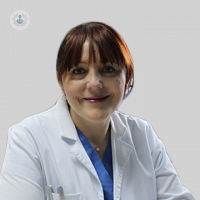Novel technique for preventing heart disease patients taking anticoagulants
Written by:Patients with heart conditions can benefit from a novel technique which avoids having to take anticoagulants. Is the use of a valved conduit anatomically shaped normal aortic root, sutured to a biological stentless. The technique avoids the possibility of a reoperation within approximately 15 years.

The technique with biological prosthesis and who can undergo the operation
This is a novel technique which have already benefited 35 patients with aortic valve disease, and avoids patients having to take blood thinners for life after heart surgery.
This step in the surgical practice applies in patients requiring valve replacement and aortic root. In this sense, it can be used in the following situations, among others:
- Failure or defect aortic valve closure- Dissection or tear in the wall of the ascending aorta- Stricture or abnormal narrowing of the valve orifice
The key novelty of the technique lies in the type of prosthesis and implant mode the patient. Thus, the technique involves the use of a valve-shaped aortic root Normal. Said conduit is created in the same operating room, suturing the same biological stentless. In the fact that the biological prosthesis is anatomically very similar to the native valve lie the advantages of the technique because it allows greater elasticity, better hemodynamics and avoid problems related to mechanical character devices.
Advantages and disadvantages of heart technique
The aim of the experts in Cardiac surgery is to improve the lives of patients with heart disease.
The biggest advantage offered by the technique, to certain cases of heart surgery is that patients requiring treatments not undergo anticoagulant medication after surgery, something that, until now, had to take forever. Thus patients with heart disease are released from some risks involved in this type of medication.
Also as unsupported bioprosthesis has better hemodynamic characteristics, allows a better quality of life for the patient and may even sports effort. The bioprosthesis is highly durable, isolating in most cases the possibility that the patient, with time, be resubmitted to another operation, by the fact that the implanted device has been corrupted or damaged. Moreover, 100% of patients do not need reoperation at 10 years of operation, and 83% of patients with heart disease does not require back surgery after 15 years.
However, it is still heart surgery with some technical difficulty that requires extensive experience of the surgeon, and therein lies the biggest drawback of this surgery.Intervention and postoperative
This is surgery about three and half hours, after which the patient will require a stay of 48 hours in the Intensive Care Unit (ICU) and then five days of hospitalization. If everything evolves favorably, the patient will receive a medical discharge within that period.
The quality of life after about two months after the intervention is comparable to that of a person with his native valve.
Edited by Patricia Crespo Pujante



